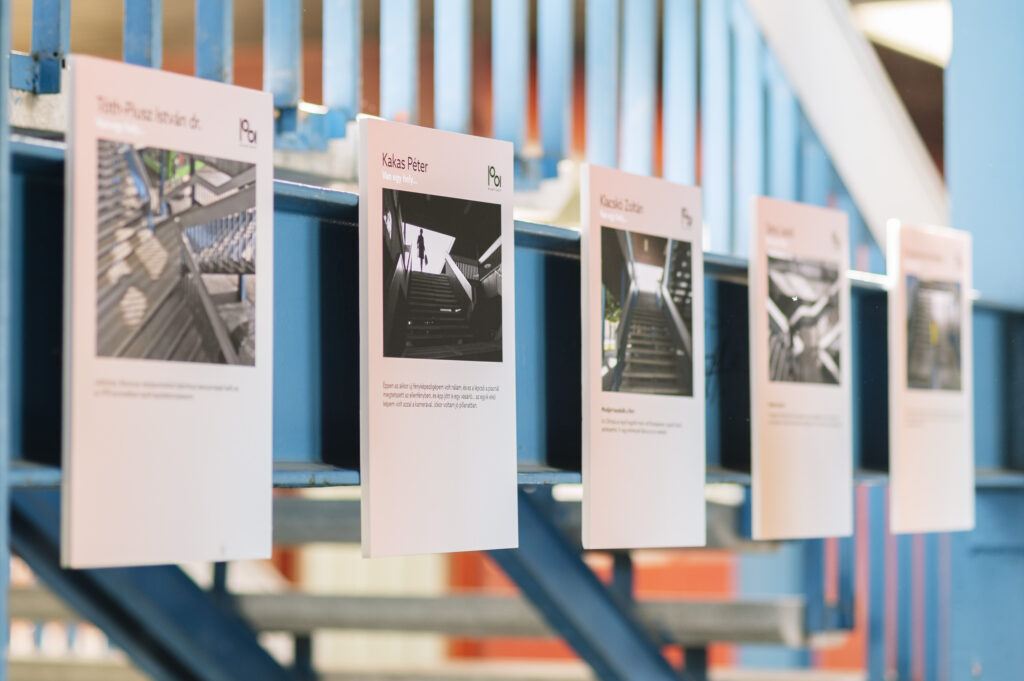On 26 April, the training started in the project gallery of the Contemporary Architecture Centre, where students from Spain, Portugal, Italy and Hungary learned about tactical urbanism and small-scale urban interventions.
During the week, the project participants were able to listen to different presentations on the topic by Levente Polyák (Eutropian) and Lilla Gerencsér and Dániel Győrfi (Rév8), but also to learn more about the work of KÉK through a presentation by Timea Szőke, project manager of the PLAY/ACT Budapest team.
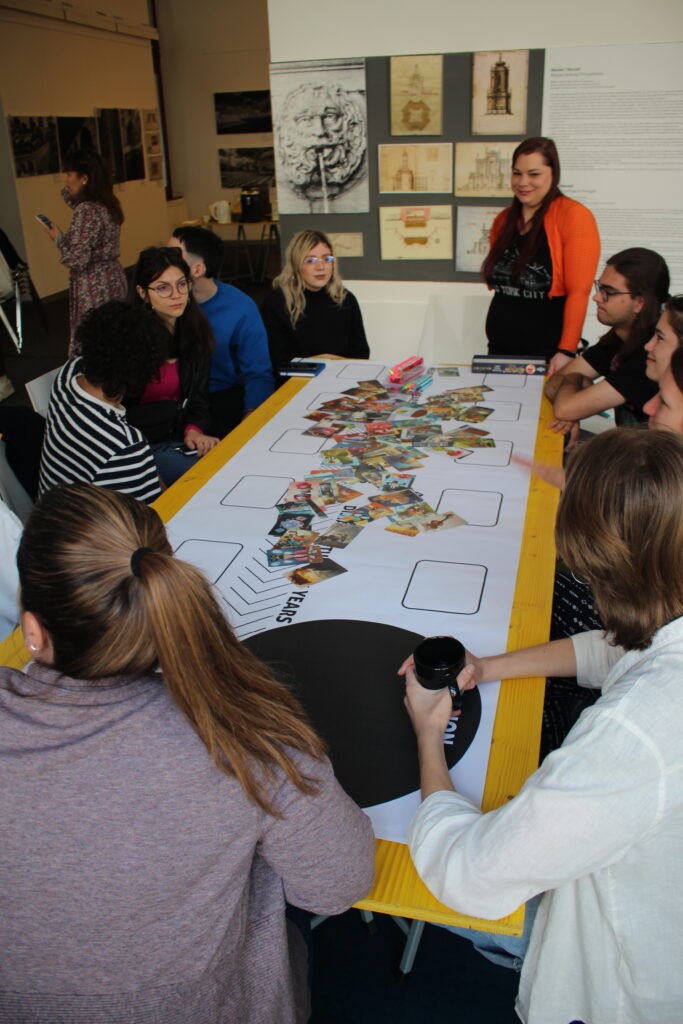
In addition to the lectures, there was no shortage of hands-on activities, with a total of four different creative workshops for the students visiting Budapest.
Olívia Kurucz, a PhD student at the Department of Urban Planning of the Budapest University of Technology and Economics, presented good examples of community engagement and gamification tools, and the students were also able to participate in a participation board game she developed.
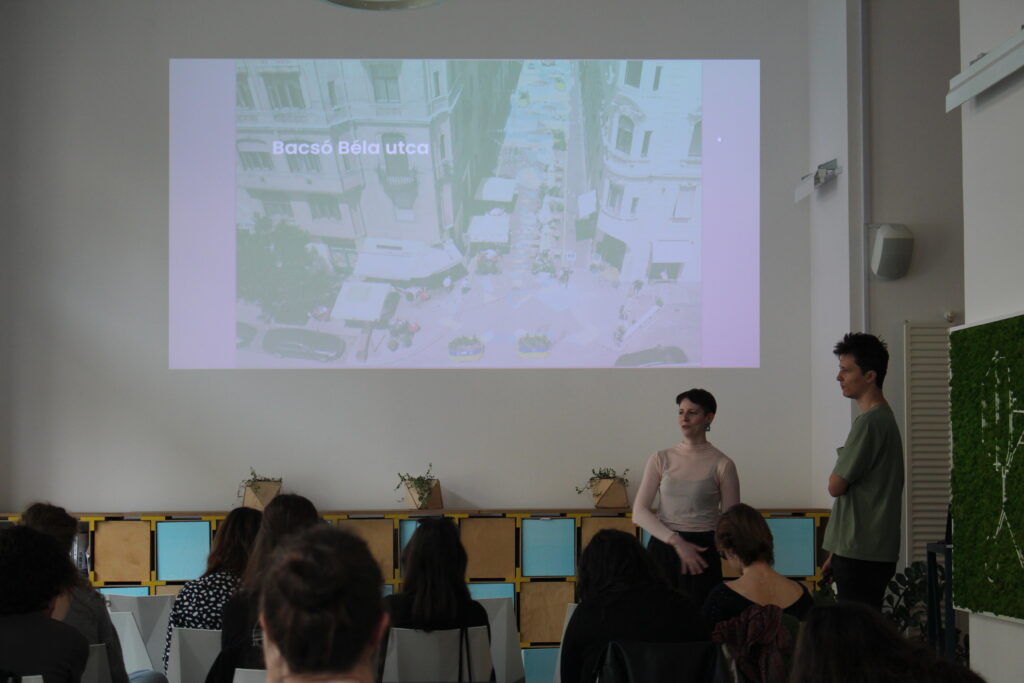
Éva Bubla’s workshop “Site specific art projects and sensing the city” focused on the question of how we perceive the city beyond the visual. Touch, hearing and smell were the main focus of the city walk she led.
Anna Szepes, a drama instructor, introduced the international team to the Kelenföld City Centre, the Budapest team’s area of action, from a new perspective through unusual public space interventions. The session among others included silent dancing in the metro and developing a unique route for those who are also looking for unusual situations in the city.
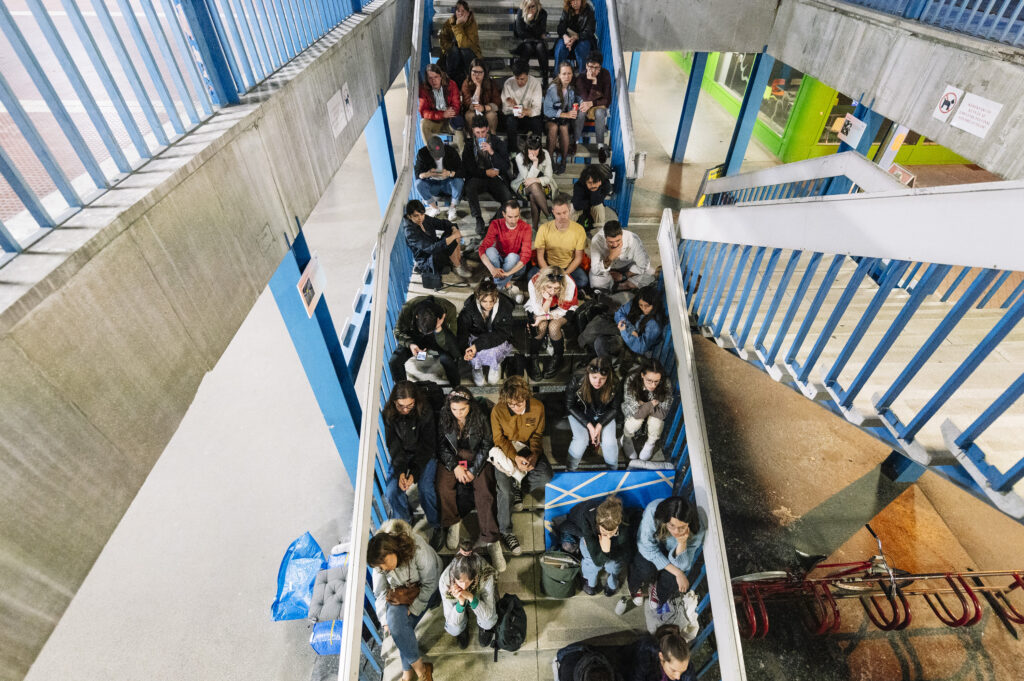
The last two days were led by KÖZMŰ – Közös Műhely, from where the founder Réka Holánszki and her colleague Ádám Tóth joined us. During the two days, everyone could experience how ideas become reality. The task was for each team to design wooden seating furniture, which was then placed in the Kelenföld City Centre. Thanks to the fantastic workshop leaders, even those who had never worked in similar environments or with similar materials before were able to go from design to implementation.
The design, building and painting of the furniture took place on site at the Kelenföld City Centre, so the local residents passing by could also follow the development of the work.
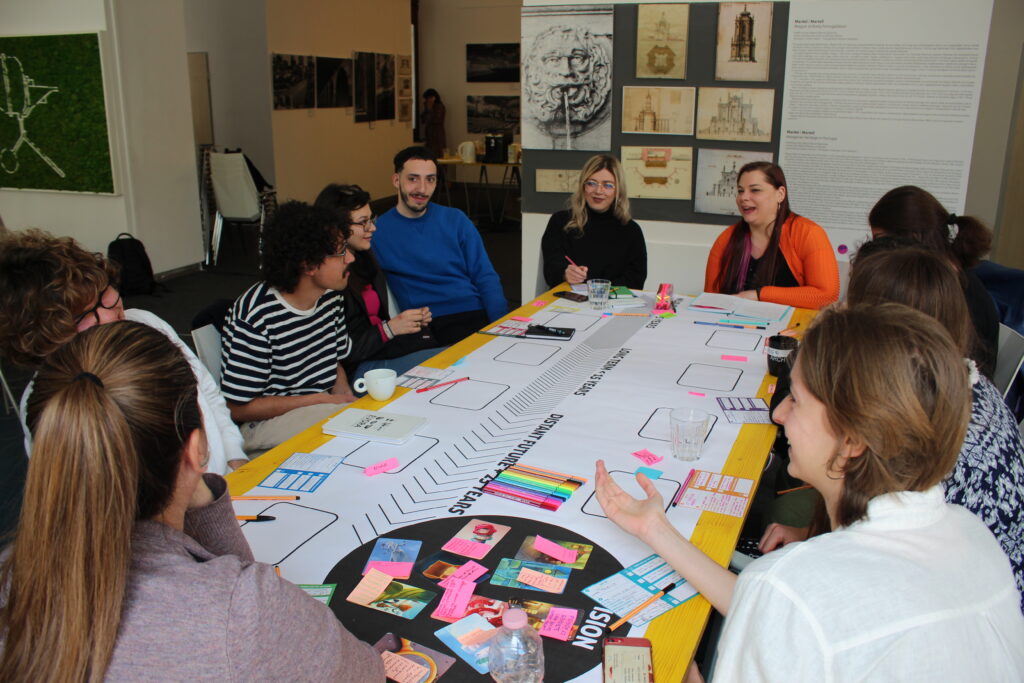
The days of intensive workshops ended on 1 May with the community event “Van egy hely… Majális a Tétényi úti üzletközpontban”. The team spent the morning installing the photo exhibition “Van egy hely… Pillanatképek Kelenföldről”, and then the celebrations begin with the opening at 16.00 in the afternoon.
A total of 107 entries from 24 photographers were presented at the photo exhibition. The exhibition was attended by almost all the applicants and many visitors, with nearly 50 people taking part in the interactive guided tour. The participants included professional photographers, enthusiastic local patriots and young hobby photographers, giving us a very broad perspective of the shopping centre with their personal stories and memories.

The opening was followed by an architectural city walk, developed and led by the students from Budapest. Around 30 people joined the urban walk, including visitors from other districts of the city and local residents who had already lived in the area when the panels were built.
The day closed with a film club in the city centre, which attracted nearly 40 guests. During the evening, a short documentary film, Concrete form of resistance, followed by a screening of part of the Neighbours series – a very iconic Hungarian series about the life in the iconic panel buildings. The movie club evoked the atmosphere of the former Olympia cinema for the night.

